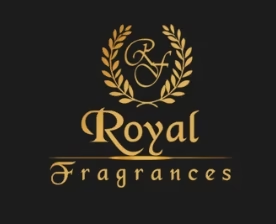Ancient Greek Evil Eye Protection: Home Safeguards

As the sun sets, shadows creep over the ancient Mediterranean. A sense of unease settles over your home. The evil eye, a curse from a malevolent glare, has haunted this area for thousands of years.
The Greeks of old didn’t let dark forces threaten their homes. They used Greek folk magic and superstitions to protect their dwellings. They found clever ways to keep their homes safe.
Today, you carry on this legacy of protection. You need to keep the evil eye’s influence away. By exploring ancient techniques, you’ll find talismans, amulets, and rituals to keep darkness at bay.
These symbols, like the blue-eye glass nazars and the hamsa hand, have lasted for centuries. They show the power of the evil eye belief.
Let’s explore the history and cultural importance of this superstition. We’ll see how the Greeks protected their homes from the evil eye. You’ll learn about ancient techniques and how to use them in your home. This way, you can ward off curses and keep your home safe.
The Evil Eye: Ancient Mediterranean Techniques from Greece to Protect Your Home
The evil eye belief has deep roots in the Mediterranean. It comes from ancient Greek and Roman traditions. Over time, cultures across the Mediterranean have kept this belief alive. They use evil eye protection in their daily lives and spiritual practices.
The Nazar, or Greek evil eye amulet, is a well-known symbol. It’s believed to keep away curses and negative energy. These blue-eyed amulets are common in Greek folk magic and Hellenic folklore remedies. They offer negative energy shielding for homes and their people.
Giving and showing evil eye amulets in homes shows their lasting importance. These talismans are believed to bring luck, health, and wealth. They’re a favorite for ancient home protection rituals in the region.
Other evil eye protection methods are used in Greek spiritual traditions. People use herbs, crystals, and special object placements in homes. These Hellenic folklore remedies aim to keep homes balanced and warding off curses.
Evil eye amulets are everywhere in jewelry, home decor, and everyday items. This shows the strong Greek folk magic and Mediterranean superstitions around this symbol. Its lasting impact in modern culture proves the power of this ancient home protection ritual.
Origins and Beliefs Surrounding the Evil Eye
The historical roots of the evil eye go back thousands of years. Amulets to fight it have been around since ancient Egypt. In ancient Greek beliefs, the ‘evil eye’ is mentioned by many famous authors like Hesiod, Plato, and Plutarch.
These authors tried to explain the evil eye. Plutarch said the eyes could send out deadly rays like poisoned darts. This was believed to harm both people and animals, leading to the use of talismans and amulets for protection.
Historical Roots of the Evil Eye Concept
The evil eye belief started in ancient Mesopotamia over 5,000 years ago. It then spread to the Mediterranean superstitions. It became a big part of Greek culture during the evil eye in classical antiquity.
Cultural Significance across the Mediterranean
The evil eye belief has lasted through time, affecting many cultures in the Mediterranean. Today, it’s still common in places like Turkey, Italy, Spain, and Israel. People wear evil eye jewelry and amulets to protect themselves.
It’s believed that people with blue eyes are more likely to spread the evil eye curse. This is why blue-eyed amulets are popular in Greek culture. Babies, women, and the youngest are also seen as more at risk, making evil eye protection even more important for them.
| Country | Beliefs and Practices |
|---|---|
| Greece | The evil eye belief is deeply rooted in Greek culture, with various amulets and rituals used for protection. Blue-eyed amulets are particularly common, and the curse is believed to affect infants, women, and the young. |
| Turkey | The evil eye superstition is widely practiced in Turkey, with the use of blue and white amulets known as “nazar” being a common sight. |
| Italy | The evil eye belief, known as “malocchio,” is prevalent in Italy, with various protective measures and rituals used to ward off the curse. |
Symbolism and Meaning Behind the Evil Eye
The symbolism of the evil eye comes from ancient Mediterranean cultures. These cultures believed the eye had apotropaic magic to keep harm away. The evil eye amulet, shaped like an eye, is a well-known protective talisman.
This amulet often has blue and white circles. It’s meant to turn back evil gazes. In Turkey, they call it a nazar. You can find them on houses, cars, and as jewelry. Other symbols like the hamsa hand also protect against the evil eye.
Using eye motifs and apotropaic magic to fight the evil eye has a long history. It’s seen in ancient Mesopotamia, Egypt, Greece, and Rome. The eye talisman is a strong symbolic representation of protection.
The evil eye talisman is still popular today. It’s worn as jewelry or displayed at home. Its symbolism and meaning show our wish to protect ourselves and our loved ones from harm.
Traditional Greek Evil Eye Amulets and Charms
For thousands of years, the ancient Greeks and Romans used many objects to protect themselves from the evil eye. They called these charms apotropaia, probaskania, periammata, periapta, and profylaktika. These talismans were thought to keep away bad glances and negative vibes.
The fascinus or fascinum is a famous phallic charm. It was worn or placed on buildings to keep the evil eye away. Greeks also dressed young boys as girls to avoid bad gazes. They even spat on their clothes for extra protection. These old Greek folk magic ways show how deeply the evil eye was feared in the Mediterranean world.
Nowadays, traditional Greek charms and Greek evil eye amulets are very popular. People want them for their cultural value and to keep the evil eye at bay. You can find them in jewelry, home decor, and personal items. These symbols of Mediterranean protective rituals still fascinate people worldwide.
Placing and Displaying Evil Eye Protection in the Home
The evil eye charm is a powerful talisman from ancient Greek and Mediterranean traditions. It is used to ward off negative energies and protect the home. Greek Vastu and Feng Shui suggest placing the evil eye in strategic spots for maximum protection.
Strategic Locations for Maximum Safeguarding
The main entry point of your home is key for the evil eye’s placement. Hang it by the front door to block negative forces. You can also place it in your living room, opposite where guests enter, to create peace.
For extra protection, put the evil eye in children’s bedrooms. This shields them from harm. Outdoors, hang it on a tree or in the garden to attract good energies and keep away evil.
By placing the evil eye in important spots, you follow ancient home protection rituals. This ensures your home stays safe from the evil eye’s harm.
The evil eye’s power comes from being personal. Choose a size, material, and design that fits your needs. With the right placement and care, the evil eye can protect your home and family.
Evil Eye in Home Decor and Design Trends
The ancient evil eye talisman has inspired not just jewelry designers but also interior designers. You can find the evil eye motif on many home items like tableware, lamps, and fabrics. These items aim to protect and bring good luck to any home.
Decor items like wall hangings, wind chimes, and sun catchers with the evil eye design are in demand. They help incorporate this ancient symbol into modern home environments. Some designs even mix the evil eye with symbols like elephants or peacocks, making them both beautiful and meaningful.
The evil eye home decor trend is on the rise. People and designers are using the evil eye to add positive energy and keep negative vibes away. From evil eye design trends in textiles and wall art to bold lighting and tableware, the evil eye is a key element in today’s evil eye motifs and home decor.
The evil eye in home decor reminds us of its lasting power to protect homes and their people. As this trend grows, people and designers are finding new ways to incorporate evil eye in interiors. They’re creating spaces that are not just unique but also filled with protection and good fortune.
Signs of the Evil Eye and Identifying Its Presence
The belief in the evil eye is still strong in many cultures worldwide. It spans from the Mediterranean to Central America. Major religions like Islam, Judaism, and Christianity believe in it too.
Some signs of the evil eye include sudden bad luck and feeling watched. You might also feel tired or see your business fail. These signs of the evil eye and identifying its presence help you protect yourself.
Unexplained Misfortunes and Negative Occurrences
The evil eye can cause unexplained negative occurrences in your life. This includes:
- Sudden and unexplained illnesses or physical ailments
- Unexplained emotional distress or mental anguish
- Unusual changes in behavior or personality
- Sudden loss of energy, vitality, or motivation
- Failing business ventures or career setbacks
- Strained relationships and increased conflict
- A general sense of being watched or unsettled
Spotting these signs of the evil eye’s influence is key. It helps you take steps to protect yourself and find ways to fight its effects.
Conclusion
The evil eye belief and protective talismans have long been part of Mediterranean and Greek culture. From ancient Egypt to classical Greece and Rome, it has fascinated and scared many. Today, the evil eye symbol is still popular in home decor, showing its lasting impact.
Learning about evil eye protection can add safety and harmony to your home. This exploration shows the rich history and cultural importance of this belief. It also shows how it influences home design today.
This article on ancient Greek evil eye protection shows its lasting impact. It invites you to explore the diversity of human beliefs and the power of symbols today. Whether you use evil eye amulets or just appreciate the history, it shows the lasting power of cultural practices.





